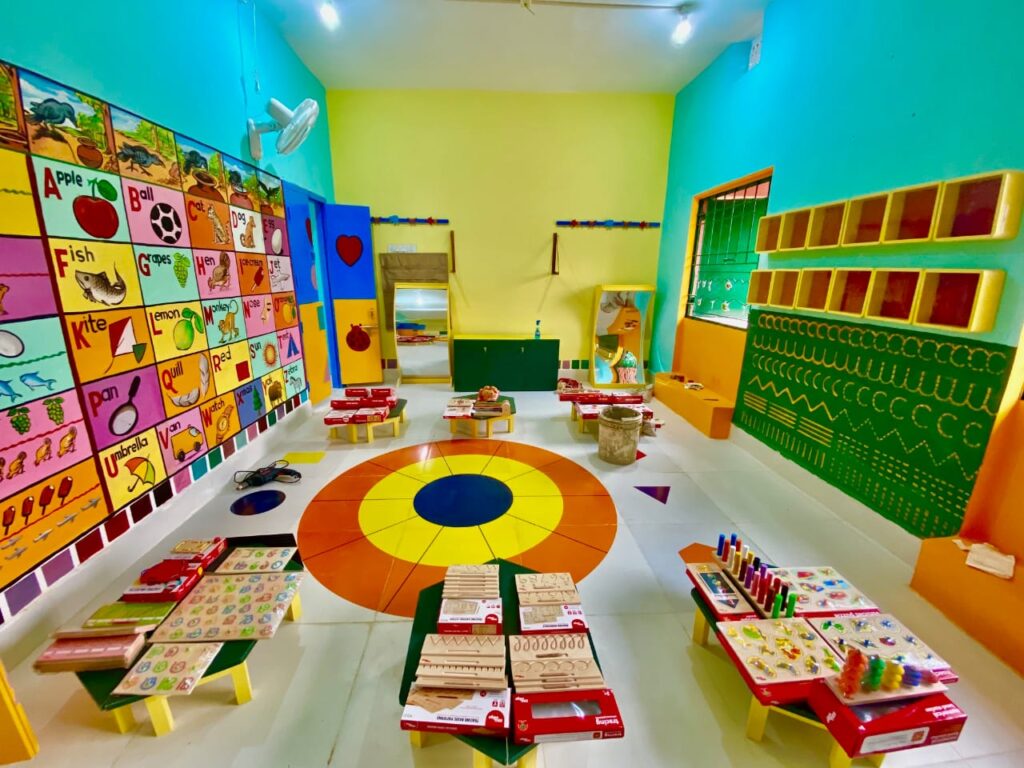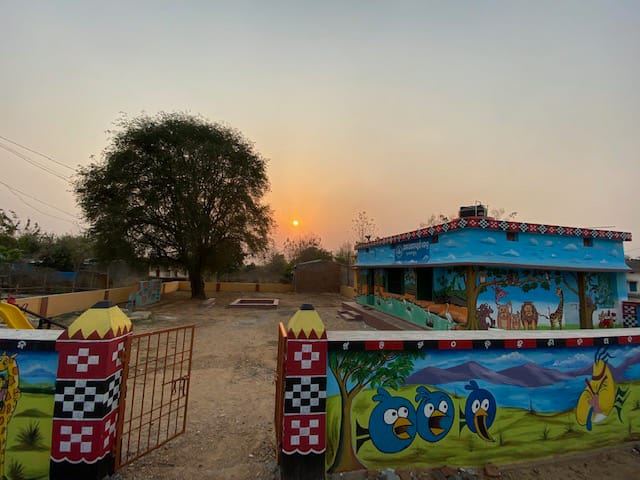
The Primer NewsDesk
Odisha’s Sundargarh district has taken up the mission to transform over 2,800 Anganwadis (rural child care centres) to provide a holistic learning space for young children. The modernisation programme is informed and shaped by the Building as Learning Aid (BaLA) model – which identifies the building itself as a core component for advancing learning outcomes of children.
- 2,501 existing Anganwadi Centres (AWCs) will be remodeled, and 323 new centres will be built as part of the programme. The new AWCs will serve the early childhood needs of over 60,000 rural children in the tribal-dominated district.
- As part of the BaLA model, the physical spaces such as the boundary wall, the floor, the walls, and the ceilings are identified as spaces for introducing learning interventions. The interventions create a positive learning atmosphere as well as become aids for interactive learning.
- BaLA is an interface between architecture and the learning needs of children – creating three-dimensional spaces that are functional, comfortable, and stimulating for children.
- The programme is funded by the District Mineral Foundation (DMF), Sundargarh and the Odisha Mineral Bearing Areas Development Corporation (OMBADC), key financiers of development in the region.

The new AWCs aim to be colourful spaces for children to learn and grow fostering a nurturing environment with nutrition gardens, outdoor play areas, safe drinking water, clean toilets, and running electricity.
- The floors, walls, and ceilings of the AWCs are being transformed into colourful spaces with learning tools – illustrations of birds, animals, fruits, vegetables, the solar system, and more. The spaces have been used to display numbers, alphabets, and other childhood learning components.
- The boundary walls are moving away from just being solid-colour walls to inviting structures with relatable characters that children will love. These interventions at making the space more aesthetic and comfortable aim to reduce the absenteeism of children as the centre becomes a source of joy.
- The centres have children-appropriate low-height furniture and games painted on the floors to add to the comfort of children, and give them ways to play.
- The AWCs will have special private rooms for mothers. These changes mark a stark shift from AWCs being basic rural structures – to become holistic centres for taking care of the health, nutritional, and educational needs of young children.

Apart from the transformation of the spaces, Sundargarh has introduced several interventions to support the educational and nutritional needs of children. Many of these programmes are funded by the DMF, Sundargarh.
- Special learning kits with alphabet and number figures, board games, interactive story books, toys etc are being procured to provide children with a wholesome learning experience.
- As the provision of nutritious food remains a key function of AWCs, the district has taken the programme a step further by the introduction of millet-based foods in the regular meal plans for the AWCs. Millet-based nutritious ladoos will be provided in the AWCs.
- Similarly, the district has introduced chikkis made of the superfood, Spirulina. Spirulina is widely consumed globally as an extremely nutrient rich diet supplement.
While various programmes have been undertaken across the country for modernization of AWCs, and specifically aligned with the BaLA model – Sundargarh’s transformation is remarkable since the district has committed to remodel all of its AWCs, and not just a ‘model’ few.
- “Children will spend quality time in our modernised Anganwadi Kendras. Here, they will learn in an entertaining and playful learning atmosphere”, says Nikhil Pavan Kalyan, the DM & Collector of Sundargarh. He envisions that the modernization will play a pivotal role in physical, mental, and emotional development of children in the district in the coming years.
- Odisha’s Chief Minister Naveen Patnaik recently laid the foundation for the project in the district. Sundargarh has earned its name for becoming a hub for the national sport of Hockey.
- The district is building India’s largest hockey stadium in the steel city of Rourkela and plans to give the sport a boost by creating astro-turfs in all 17 blocks of the district, creating modern facilities for training.








